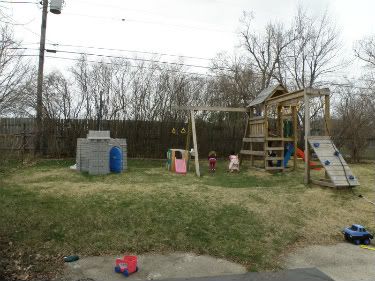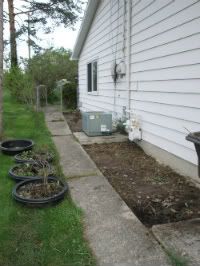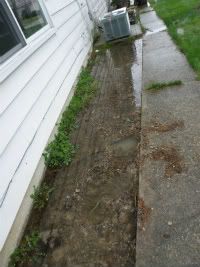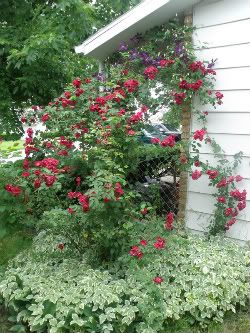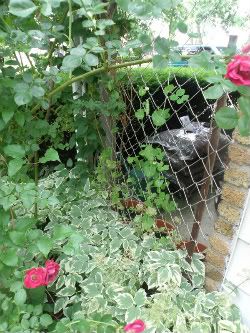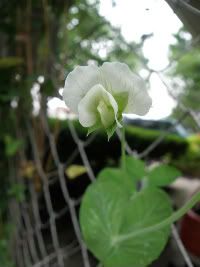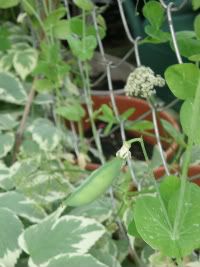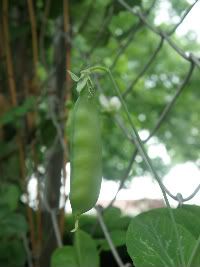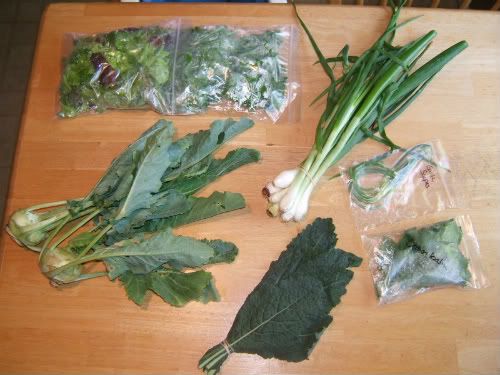We have been dreaming of our garden for several years, and have run into difficulties each year. We do have a back yard, but it is small and is used primarily as the playspace for the daycare kids--as you can see, it is filled with playstuff:
The above picture is how the yard looks in very early spring. Looking at the picture I just took from the same view, you'll see it becomes a much greener, happier space in the summer. But still, not much room for a garden: 

We knew that for as long as we ran a daycare, we needed a separate, more protected area to grow food. Along the south wall of our house is a wonderful space, and we were inspired to turn this area into our garden.
It seemed like such a great area where we could just throw in some nice soil, put in some vegetable seeds, and watch the plants take over! HOWEVER. This is what happened every time we got some rain:
Yikes. Now that is what you call some flooding. This perfect area between the house and sidewalk has literally NO draining ability. Now, we are complete novices about all things gardening, but we instinctively know that this much water every time we get a slight rainfall isn't exactly a plant's idea of happiness. Too much of a good thing is very, very bad.
How could we make this space useful? First, we had to deal with the drainage issue. A little background: when we moved in, this space was already filled in with gravel. It grew lots and lots of weeds and was pretty unsightly. When we originally had the idea for the area to be a garden, we didn't realize that the ugly, weedy gravel was serving a purpose: DRAINAGE. All we saw was a future dirt-filled area, so we spent a whole weekend removing all the old gravel, to make way for dirt. That was 2 years ago. A neighbor gladly took the gravel from us for his driveway. We couldn't wait to fill up the empty space with some fertile soil and start growing...and then, it rained. And realization hit, hard. All the sweat and digging created nothing but a water pit.
Realizing we didn't have the money to refill the area with stones right away, but still wanting to start growing for the season, we got some 'whiskey-barrel liners' and prepped them with drainage holes, a layer of rocks, and soil. These were our first planting containers.

We had tomatoes, zucchini, and peppers growing in the whiskey barrel liners, but they didn't do well. The space around the containers still flooded every time it rained, and it just was not a healthy place for growing plants, which need air for their roots.
If we wanted a good, healthy growing place, we had a little work to do first. This spring we set out to create the Little Hands Garden. First, we cleared out all the weeds, clumps of grass, and saplings that had made a home in that gnarly place. Here, my 12 year old helps dig out some insanely strong clumps of weedy grass:
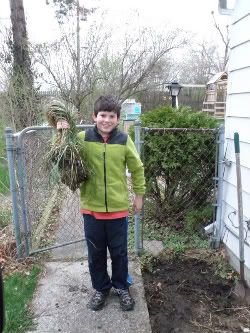
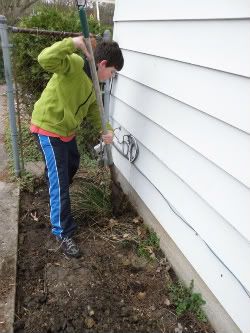
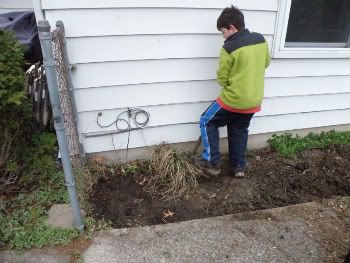
Once the weeds were evacuated, we staked down some weed liner...
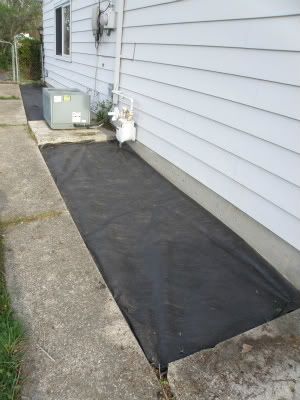
Then hired a neighbor to bring in some river rock to fix our drainage problem. Upon the bed of rocks, went cedar garden boxes that were built by my Other Half, which we then filled with a mix of soil. I will admit, Other Half (aka Craig) did most of the work.
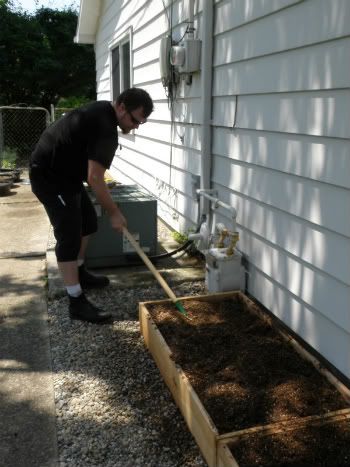
So now, for your viewing pleasure, if you haven't grown tired of looking at pictures, you can see the BEFORE and AFTER shots of the Little Hands Garden:
BEFORE AFTER
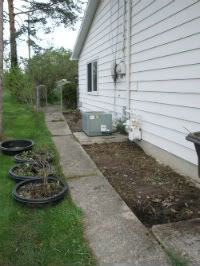
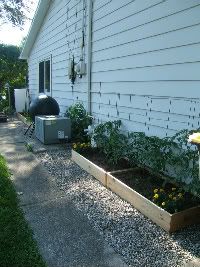
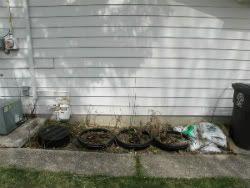

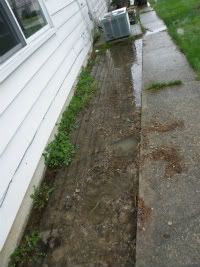

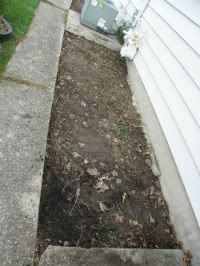
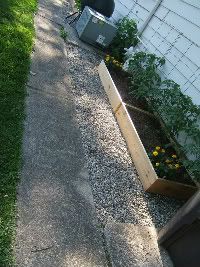
The after pics are showing some lovely green! The plants that the kids and I started from seeds months ago seem to be doing very well in their new home!
Updated 2013:
The space has had some additions over the past few summers. What looked clean and sparse above is fuller and happier now! A few pics below show the garden this summer:
Future plans for our space?
*Blueberries along the outside of the fence (we got permission from neighbor, since it's her yard)
*Grapes along the inside of the back fence
*Growing boxes and containers along the back of the house
*Chickens!!!
*Rabbits!!!
*More perennials like asparagus, fennel, sorrel, jeruselum artichokes, berries, fruit trees....
STAY TUNED! Our tiny space can do so much!!!
Updated 2013:
The space has had some additions over the past few summers. What looked clean and sparse above is fuller and happier now! A few pics below show the garden this summer:
Future plans for our space?
*Blueberries along the outside of the fence (we got permission from neighbor, since it's her yard)
*Grapes along the inside of the back fence
*Growing boxes and containers along the back of the house
*Chickens!!!
*Rabbits!!!
*More perennials like asparagus, fennel, sorrel, jeruselum artichokes, berries, fruit trees....
STAY TUNED! Our tiny space can do so much!!!
 |
| We always have a straw bale sitting next to the boxes now, for added growing space |
 |
| An herb garden made in pots has set up residence! |
 |
| The garden sometimes threatens to take over the trash bins! |
